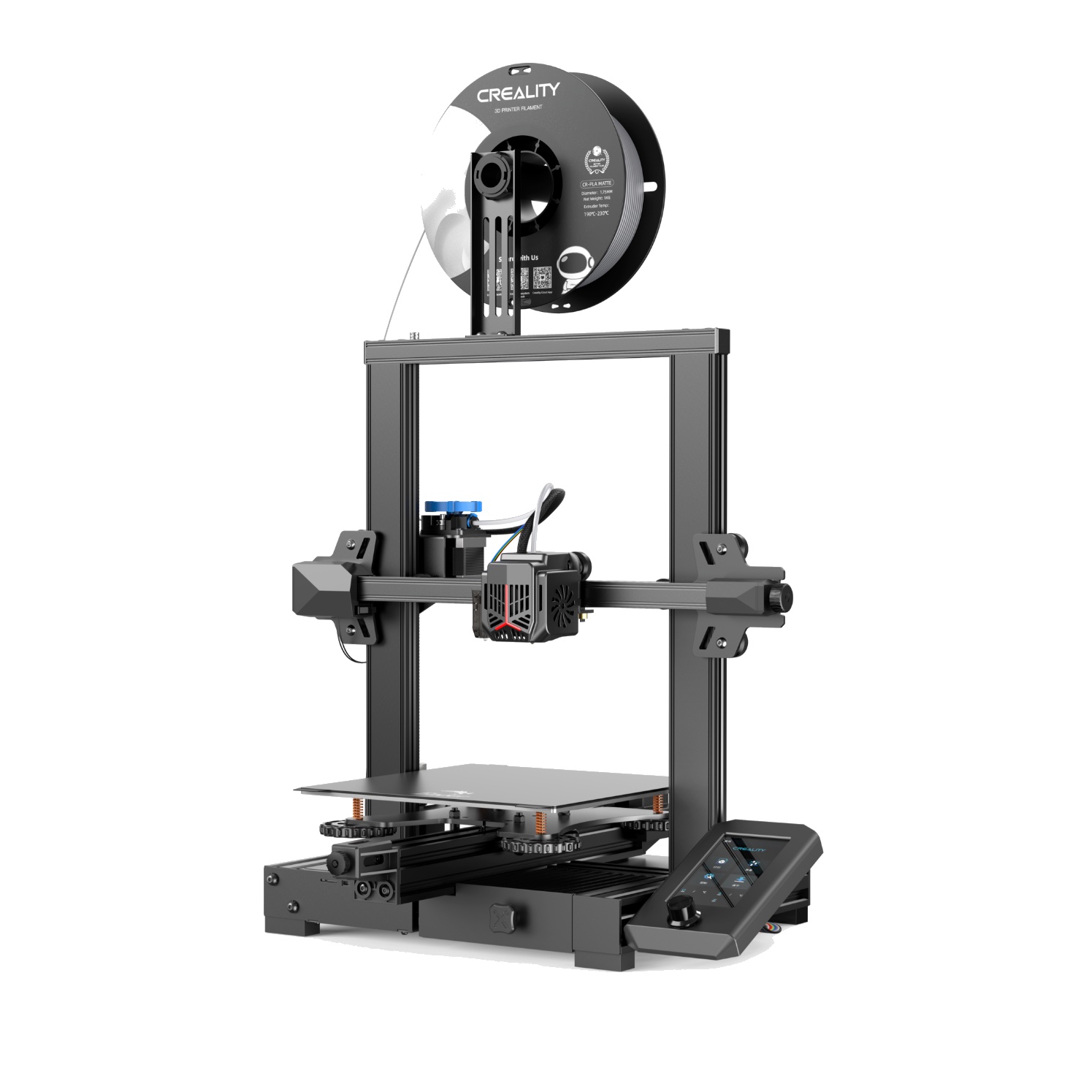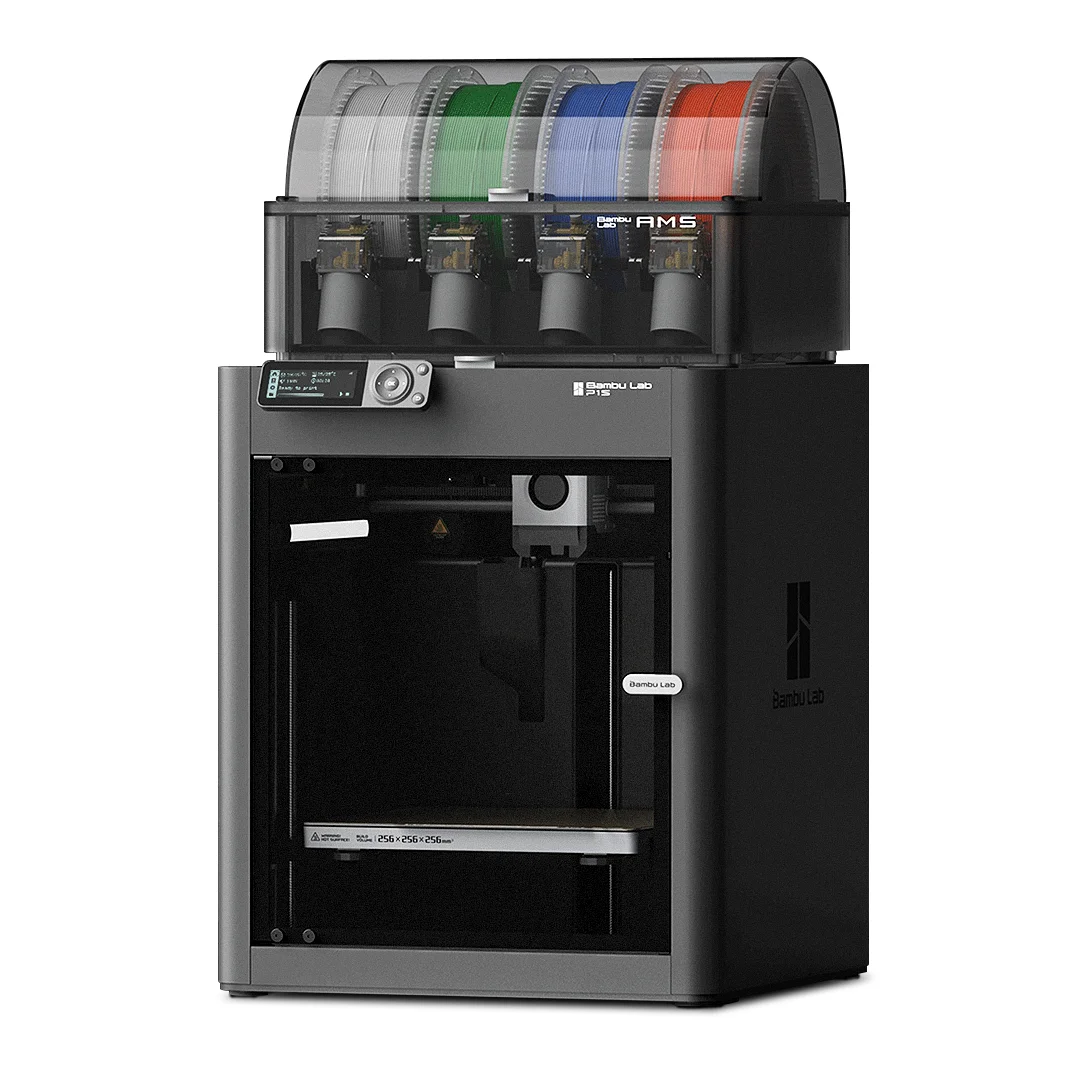Compare Ender 3 V2 Neo vs P1S
Comparison between the best 3D printers
Choose the best 3D printer at the best price. The cheapest 3D printers are here.
Buy a 3D printer here with 3D Fila.
 |
 |
|
| Model | Ender 3 V2 Neo[BUY Ender 3 V2 Neo] |
P1S[BUY P1S] |
| Printing Material | Filament | Filament |
| Buy Filament for Creality 3D Ender 3 V2 Neo | Buy Filament forBambu Lab P1S | |
| Estimated price | $310,00 | $949,00 |
| Manufacturer | Creality 3D | Bambu Lab |
| Release Year | 2022 | 2023 |
| Print Volume [mm] | 220x220x250 | 256x256x256 |
| Printer Size [mm] | 438x424x472 | 389x389x458 |
| Weight [kg] | 9,8 | 12,95 |
| Power Loss Recovery | YES | YES |
| Enclosed printer | NO | YES |
| Bed Leveling | Automatic | Automatic |
| Filament End Sensor | YES | YES |
| Bed type | Heated | Heated |
| Power supply system | Bowden | Direct Drive |
| Standard nozzle | 0,4 | 0,4 |
| Maximum Nozzle Temperature [°C] | 260 | 300 |
| Maximum Bed Temperature [°C] | 100 | 100 |
| Maximum printing speed [mm/s] | 80 | 500 |
| Filament holder | YES | YES |
| Camera for supervision | NO | NO |
| Recommended filaments | PLA, PETG | PLA, PETG, TPU, PVA, PA, PA-CF, Nylon, PC |
| Recommended slicers | Cura, Simplify, Slic3r, IdeaMaker | Bambu Studio, Super Slicer, Cura, Prusa Slicer, Orca |
| Maximum Resolution [mm] | 0,1 | 0,1 |
| Processor | 4.2.2 mainboard | Quad ARM A7 1.2 GHz |
| Display | Display touchscreen 4,3'' | Touchscreen 5'' |
| Power Supply | 350 W | |
| Connectivity | SD / USB | Wifi, Bambu bus, Cartão SD |
| Operating systems | Windows, Mac, Linux | Windows, Linux, Macbook |
| Date of registration in the system | 2022-12-09 | 2024-04-11 |
| Release date | 2022 | 2023 |
| Extra features | The Ender 3 V2 Neo printer stands out for its automatic bed leveling with the CR Touch system, ensuring high-quality initial layers. It features an all-metal Bowden extruder for increased durability and improved filament handling. Its flexible, PC-coated magnetic build plate makes it easy to remove prints and is durable and easy to clean. It also includes a new user interface with model preview and an updated gantry design. The Ender 3 V2 Neo maintains the same build volume and temperatures as the previous version, supporting popular filaments such as PLA and ABS. It features a quiet 32-bit mainboard and additional features such as a filament sensor, print recovery, simple 3-step assembly, an integrated toolbox, and belt tensioners. | The Bambu Lab P1S stands out for its out-of-the-box practicality, eliminating the need for manual adjustments with automatic calibrations such as bed leveling and vibration compensation. It features multicolor printing capability through the AMS system, allowing up to 16 colors when connecting four AMS units. With an advanced control algorithm, the P1S offers fast printing speeds without sacrificing quality. Equipped with modern features such as filament end sensor, semi-automatic belt tension, direct extruder, welded frame and all-metal hotend, along with a fully enclosed chamber, the P1S promotes a superior printing experience, supporting a wide range of materials. |
| Support for multiple colors and materials (AMS and CFS) | NO | YES |
Notes * |
||
| Cost-benefit | 7 / 10 | 7 / 10 |
| Hardware | 2.8 / 10 | 6.4 / 10 |
| Tela | . | . |
| Print volume | 3 / 10 | 4 / 10 |
| Performance | 0 / 10 | 4 / 10 |
| [BUY Ender 3 V2 Neo] | [BUY P1S] |
Conclusion |
| In comparing the Creality 3D Ender 3 V2 Neo and the Bambu Lab P1S, a clear distinction emerges based on several factors including price, capabilities, and overall performance. The Ender 3 V2 Neo, being the more cost-effective option, appeals to budget-conscious users who seek a reliable entry-level 3D printer. Its features, such as automatic bed leveling, a flexible build plate, and a user-friendly interface, ensure a decent printing experience, particularly for common materials like PLA and PETG. However, it does fall short in print volume, speed, and material versatility compared to its pricier counterpart. Conversely, the Bambu Lab P1S is designed for those looking for advanced performance and features. It offers a larger print volume, faster print speeds, and the ability to handle a wider range of materials, including more complex filaments. The fully enclosed chamber and built-in automation reduce the need for manual adjustments, which enhances user convenience and ensures higher print quality. This model is better suited for more demanding projects that require multi-material and multi-color printing capabilities. In conclusion, the choice between these two printers largely depends on the user's priorities. If budget and simplicity are paramount, the Ender 3 V2 Neo provides excellent value. However, for users seeking higher performance, better material support, and advanced features, the Bambu Lab P1S justifies its higher price point with superior capabilities and a more robust printing experience. |

